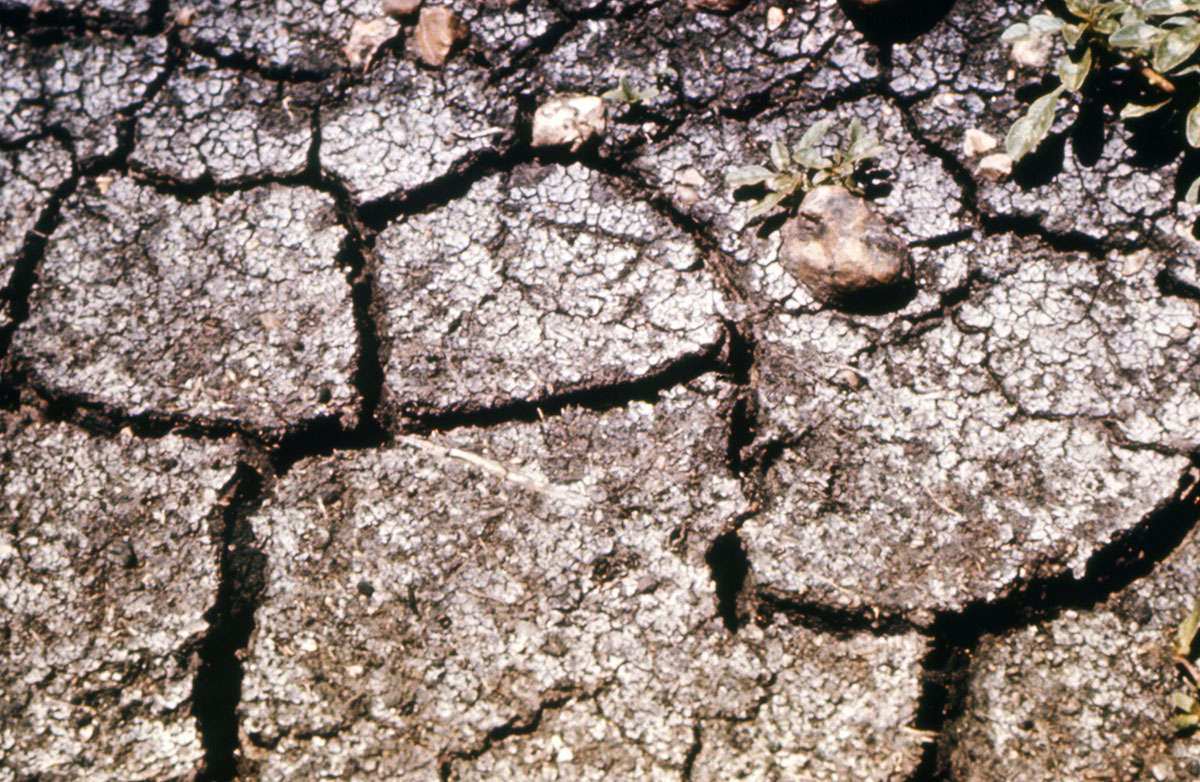
A close-up image of dry, cracked soil during a drought. Credit: Public Domain
A drought is a prolonged period with less-than-average amounts of rain or snow in a particular region. The severity of the drought depends on the amount of time that a region receives below-average precipitation.
For example, a few weeks without rain could stress a farmer’s crops during the growing season. This is called a flash drought. But it could take a much longer dry period to see a full drought that would affect a region’s water supply.
What causes a drought?
A drought is caused by drier than normal conditions that can eventually lead to water supply problems. Really hot temperatures can make a drought worse by causing moisture to evaporate from the soil. Just because a region is hot and dry doesn't necessarily mean it is going through a drought. Droughts only occur when an area is abnormally dry. Here's why:
Rain and snow don’t fall evenly across Earth. Some regions are routinely wet and others are routinely dry. From season to season — and from year to year — the amount of rain or snow in a location can vary.
However, over a period of many years, the average amount of precipitation in a region is fairly consistent. For example, in the deserts of the American Southwest, the average precipitation is less than 3 inches per year. But, the average yearly precipitation in Atlanta is about 50 inches.
When a particular area gets less rain than usual, the soil gets much less moisture, too. The soil starts drying out and plants die. When this pattern continues for several weeks, months or years, the flow of streams and rivers decreases and water levels in lakes, reservoirs and wells fall. Eventually, the unusual dry weather causes water supply issues, and the dry period becomes a drought.
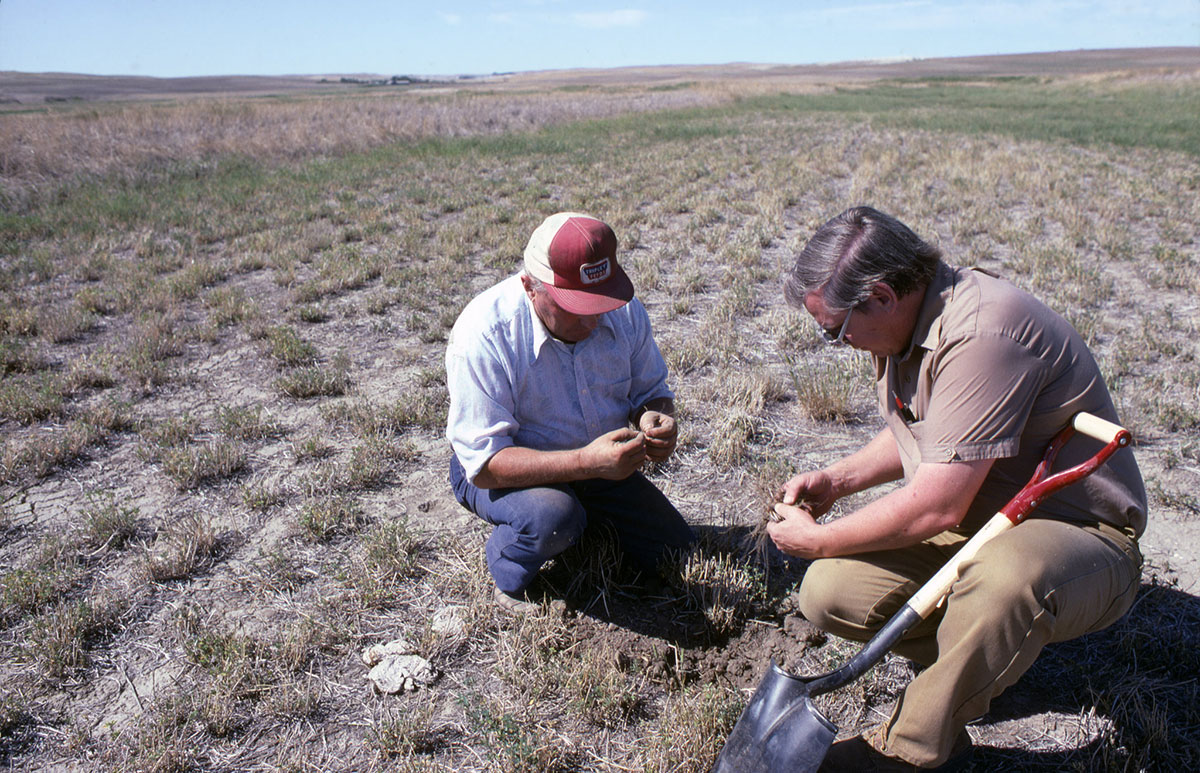
Two men examine roots of alfalfa and grass hay hit by drought in Sidney, Montana. Credit: Public Domain/USDA NCRS Montana
Does a drought end when it rains?
Yes and no. Rain can help during a drought, but it doesn’t make the drought go away. A light rain shower might cause the grass and plants to green up. But if that water quickly evaporates into the air or is soaked up by plants, the drought relief doesn’t last long.
A thunderstorm can bring lots of rain into a region, but often the rain comes so quickly that it goes into sewers and ditches instead of soaking into the soil. In fact, if a thunderstorm suddenly hits a region experiencing drought, it can cause a flash flood.
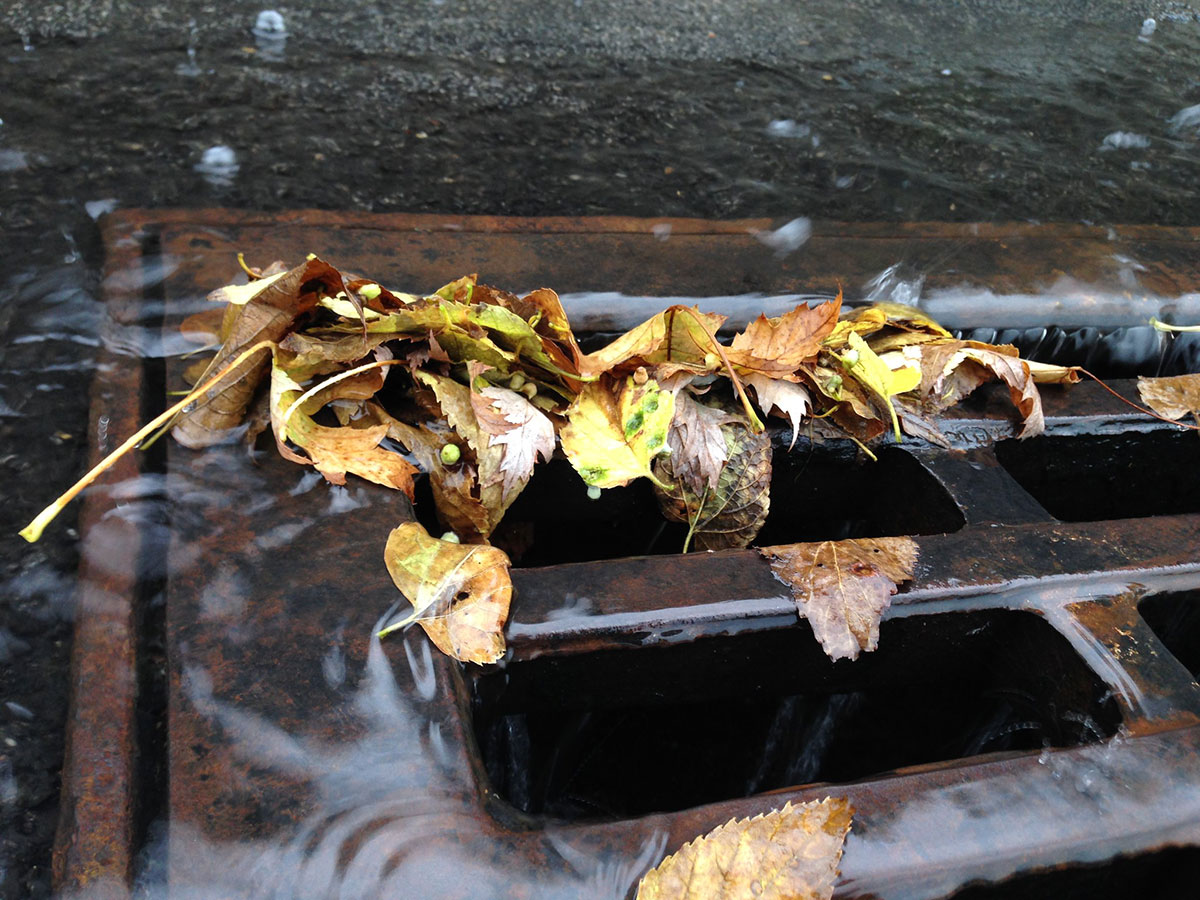
If a thunderstorm hits during a drought, the rain can come too fast to be absorbed by the soil and the water may just end up going down a storm drain. Credit: Public Domain
The only way a drought can really end is with enough regular soaking rains or significant snow. Rains that soak into the soil can replenish the groundwater. Groundwater provides water to plants and can refill streams during non-rainy periods.
One soaking rain may help improve drought conditions. However, multiple soaking rains over several months are needed to truly return things to normal.
How do we monitor droughts?
One way to monitor droughts is from weather satellites in space. For example, satellite data were used to develop a tool that alerts farmers about upcoming flash droughts.
The National Oceanic and Atmospheric Administration, or NOAA, GOES-R (Geostationary Operational Environmental Satellites-R Series) and JPSS (Joint Polar Satellite System) series satellites can capture thermal infrared images of Earth. These images provide information about the amount of heat on Earth’s surface. This information can be used to estimate evapotranspiration, which is a measure of how much water is being transferred from the land to the atmosphere through the soil and plants.
By comparing the weekly evapotranspiration data from satellites with the average for the region, scientists can predict whether or not a region is at risk for flash droughts — and give warnings to farmers and ranchers if crops will soon be under stress.
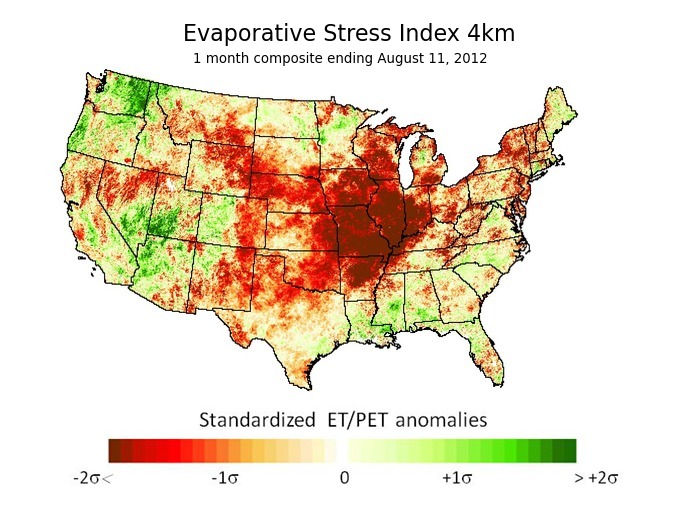
The Evaporative Stress Index (ESI) is a tool created from GOES-R and JPSS satellite thermal image data. Here is an ESI depiction of a 2012 flash drought across the Midwestern U.S. Red and brown colors indicate extreme moisture stress. Credit: USDA
How do we compare droughts over time?
To get historical data about past dry years, scientists can use data from NOAA and a computer climate model called the North American Drought Atlas. Scientists can also look at tree rings from trees that are hundreds of years old.
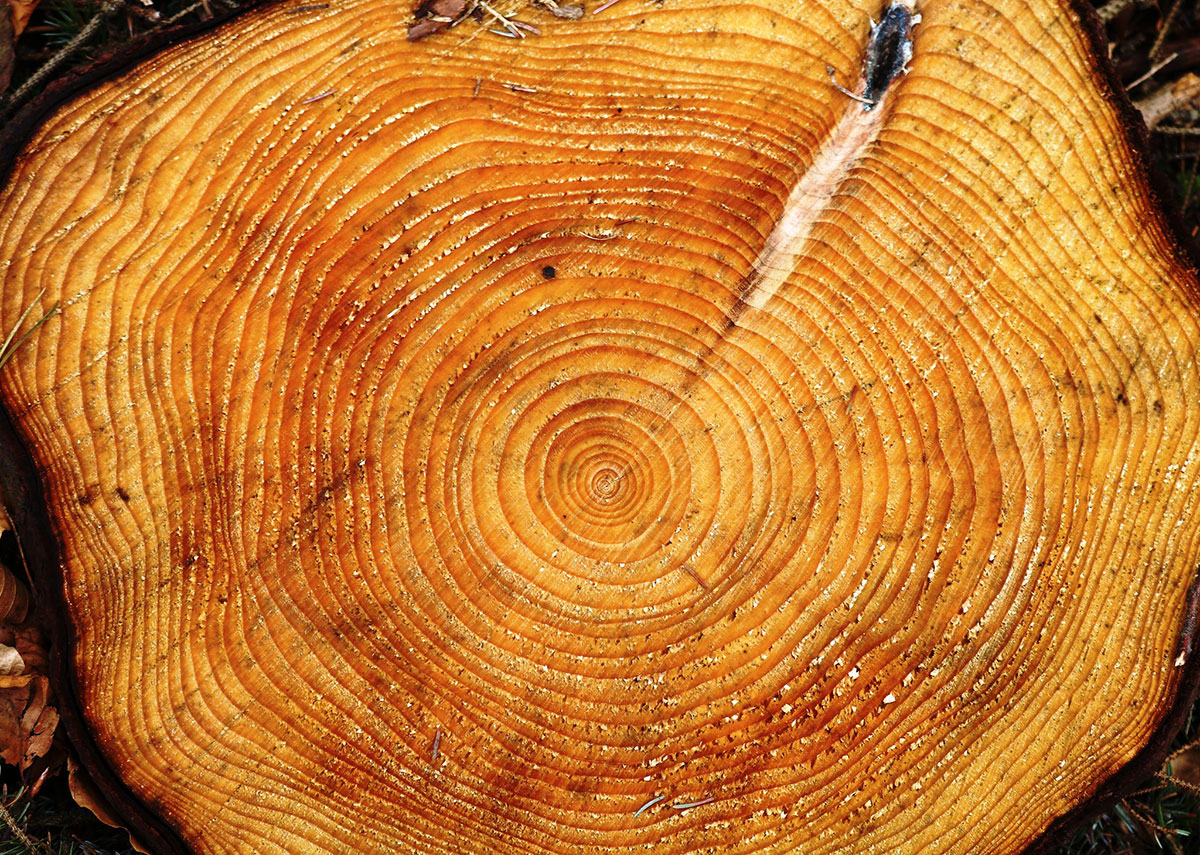
The thickness of tree rings can tell scientists about historical droughts over the hundreds of years of a tree's life. Credit: Public Domain
You may have heard of using tree rings to learn about the past, but what are scientists looking for? There is information in the thickness of each ring. Thick rings mean the tree was able to grow faster due to plentiful water, indicating a wetter year. Scientists don’t have to cut down a tree to see the rings. They can just insert a hollow drill into the trunk and pull out a cylindrical sample with the rings included.




